Hot injection of chloride. Hot pressure shots: indications for use, composition.
Hot injection is a favorite topic of those who at one time or another have been treated for alcoholism. Heat spreading throughout the body and, often, turning into heat - these feelings are remembered for a long time. Thus, if a person was given a similar injection in a vein at least once in his life, the memory of him remains forever.
What is hot prick
Despite the sensation of heat, the hot injection into the vein is not heated (this is never done) - with the introduction of the solution has a room temperature. Thus, the hot injection received its name not because of its physical condition, but solely because of the subjective sensations of the patient, namely, heat or burning after the procedure.
As a matter of fact, such an injection is an individual patient's response to a relatively quick intravenous administration of a drug called calcium chloride. Such reactions occur when
The use of hot injection in alcoholism
As you know, regular drinking, which is accompanied by alcoholism, leads to chronic hypocalcemia, accompanied by a decrease in the level of calcium in the body. What are the consequences of such changes? And how does this condition manifest itself?
The main manifestations of hypocalcemia are:
Our regular reader shared an effective method that saved her husband from alcoholism. It seemed that nothing would help, there were several codings, treatment in the dispensary, nothing helped. Helped effective method that recommended Elena Malysheva. EFFECTIVE METHOD
- bone thinning due to calcium loss;
- disruptions in the transmission of nerve impulses, contractions of smooth and skeletal muscles;
- malfunctions in the myocardium;
- increased fragility and permeability of blood vessels;
- poor blood clotting;
- osteoporosis, manifested by increased fragility and fragility of the bone, due to poor absorption of mineral substances and accompanied by severe, poorly healing fractures that appear at the slightest injury or fall (especially often in this case, a fracture of the femoral neck is diagnosed).
Thus, calcium chloride injections are done so that people with alcoholism can avoid all these changes. And, indeed, such treatment significantly improves the quality of life of patients.
How to put a hot injection
As you know, the same drug can be used in different ways. The above statement is true for calcium chloride.
Currently, calcium chloride can be introduced using:
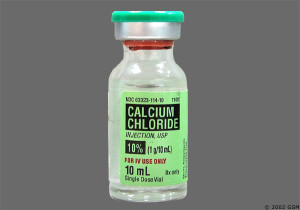
When put injections of calcium chloride
As mentioned earlier, injections of calcium chloride come to the rescue when the human body lacks calcium or when this element is required in increased volumes, for example, when carrying a fetus or lactation.
In addition, injections of calcium chloride can be indicated when calcium for some reason is poorly absorbed by the intestinal mucosa or its content in the human diet does not meet the norm.
That is why calcium chloride injections are widely used in the treatment of:
- renal, biliary and hepatic colic;
- relief of inflammatory processes;
- requirements for reducing the permeability of blood vessels;
- manifestations of an allergic nature.
In addition, calcium chloride injections are used as an anti-shock agent, which is part of the drugs used in resuscitation.
What are the contraindications
Like any other drugs, calcium chloride preparations used to make hot injections have certain contraindications. For example, calcium chloride injections will not be given to people:
- with intolerance or hypersensitivity to the drug;
- with sustained ventricular fibrillation;
- with an excess of this trace mineral in the body;
- with respiratory, renal, and heart failure;
- undergoing treatment, implying the use of glycoside drugs.
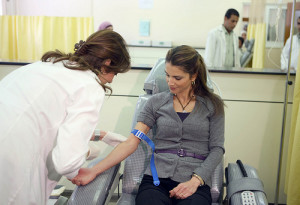
Consequences of Calcium Chloride Injection
With the introduction of calcium chloride in a vessel with a small diameter, a chemical burn of the mucous membrane of the internal venous walls may develop, which, in turn, causes the development of various diseases and, in particular, thrombophlebitis.
If the drug gets under the skin, the development of necrosis of subcutaneous fatty tissue and an intense inflammatory process, accompanied by strong suppuration and requiring immediate surgical intervention, may occur.
In addition, excessively rapid administration of calcium chloride can accelerate the contractile movement of the ventricles, which, in turn, can trigger cardiac arrest.
Attention! Medical alcohol used to treat the injection site must dry before the introduction of calcium chloride. What is it for? Everything is quite simple.
Ethyl alcohol, which is on the needle, reacts with the drug, forming insoluble calcium salts that can lead to the development of necrosis at the injection site.
Subject to the rules of use of the drug, recommended by the manufacturer, adverse reactions in patients are usually absent. Violation of the same rules can lead to serious problems.
Many people have been given hot shots during a cold or allergic reaction. Those who have ever experienced the effect of this drug will remember it forever. Initially it warms up in the mouth, then the heat spreads all over the body. It seems now clear where this name comes from. But what is the temperature of this drug? Do you think that before the injection of his warmed? And no.
Hot injection is the intravenous administration of medicines that contain organic and inorganic salts. Why does it cause a fever during drug administration? Everything is very simple. During drug administration, the blood vessels increase, and the person feels heat, which spreads all over the body from top to bottom. The temperature of the drug does not exceed the temperature of the person.
Calcium Chloride Hot Injections
Indications:
- lack of calcium in the body;
- lactation period;
- therapy of renal, biliary and intestinal colic;
- relief of inflammatory processes;
- treatment of allergic reactions;
- anti-shock agent during resuscitation.
Contraindications:
- intolerance or hypersensitivity to the drug;
- renal, cardiac and respiratory failure;
- ventricular fibrillation;
- pregnancy;
- treatment with cardiac glycosides;
- excess calcium in the body.
Application:Calcium chloride is administered intravenously, intravenously, intravenously and intracardiacly. It is forbidden to administer the drug intramuscularly. When performing intravenous injection, a thin needle and a large vein should be used. When the drug gets under the skin, necrosis of the subcutaneous fat occurs. Such wounds are quickly infected, suppurate and require surgical treatment. Drug administration time is 3-5 minutes.
Side effects:With the use of calcium chloride, heartburn and lower blood pressure may occur. With the rapid introduction of the drug can stop the heart. With the introduction of a hot injection to a pregnant woman, miscarriage is possible.
Hot shots with calcium gluconate
Indications:
- hypocalcemia;
- impaired patency of nerve impulses in the muscles;
- hypoparathyroidism;
- rickets;
- chronic renal failure;
- chronic diarrhea;
- long bed rest;
- bleeding;
- allergic reactions;
- bronchial asthma;
- eclampsia;
- parenchymal hepatitis;
- lactation period;
- postmenopausal period.
Contraindications:
- hypercalcemia;
- pregnancy;
- heart and kidney failure;
- sarcoidosis;
- nephrourolithiasis;
- atherosclerosis.
Application:Calcium gluconate is similar in its properties to calcium chloride, but has less irritating effect. Calcium gluconate is administered only intravenously. Slowly from 3 to 5 minutes. Already during the administration of the drug, the patient begins to feel warm. Children do not do this medicine, as they are afraid of the development of tissue necrosis.
Side effects:With the introduction of calcium gluconate may appear nausea, vomiting, bradycardia. Because of the small number of side effects, calcium gluconate tablets are used by women and men after 40. To strengthen bones, blood vessels and the heart.
Magnesia
Indications:
- eclampsia;
- lack of magnesium in the body;
- ventricular tachycardia;
- arterial hypertension;
- risk of miscarriage or premature delivery;
- epilepsy;
- encephalopathy;
- removal of heavy metal salts: mercury, arsenic, lead;
- stasis of urine in the body.
Contraindications:
- low blood pressure;
- bradycardia;
- violation of the respiratory center;
- before delivery;
- simultaneous use of drugs that contain calcium.
Application:Many have heard the exact name of the drug. Its present name is magnesium sulfate. If it enters the body orally, it acts only on the digestive tract. With the introduction of it intravenously or intramuscularly, a positive effect is on the entire body. With the introduction of the drug intramuscularly or intravenously, it has a calming effect, suppresses seizures, relaxes the walls of blood vessels.
With the introduction of a large dose of drugs, magnesia acts on the central nervous system and disrupts the connection between the brain and limbs. In addition, overdose of the drug causes drowsiness and disruption of the respiratory center.
Magnesia normalizes blood pressure if it is elevated. If the pressure is normal, after administration of the drug it will almost not fall. Magnesium expands the arteries, thereby improving the blood supply to the heart muscle, reducing the risk of thrombosis.
Side effects:Side effects include facial flushing, vomiting, drop in blood pressure, migraine-like pain.
Hot injections have many indications for use. But each drug carries its own threat. Thus, calcium chloride and calcium gluconate can cause miscarriage, and vice versa - magnesia is prescribed for threatened miscarriage or preterm labor. Improper administration of calcium chloride and gluconate can lead to irreversible consequences - tissue necrosis. Never self-treat with hot pricks. Improper administration of drugs can even lead to death. Talk to your doctor, study the contraindications and then proceed to treatment. Be healthy.
Most people have had to go through such a treatment procedure as a “hot injection”. Unforgettable feelings - it seems that everything in my mouth has become hot and this heat slowly spreads throughout the body. If the medicine is injected quickly, the person feels a high fever and discomfort in the lower part of the body. What constitutes a “hot injection” and why it is prescribed - PoMedicine will tell about it.
The concept of "hot injection"
Most people who do not go too far in the details of treatment, it becomes unclear why they are given a “hot” drug. It seems that before taking medicine in the syringe, it is heated. But this is not the case - the very concept of “hot injection” means something else - it is the administration of a medicine containing salts (inorganic and organic).How does salt affect the human body? As soon as a medicine is injected, the blood vessels dilate, so the person feels warm throughout the body, which spreads or “slips” gradually down from the upper body.
"Hot injection" or the introduction of calcium gluconate
Do not be afraid of this injection, the patient's temperature remains the same, it does not increase. The injection is prescribed to patients in the event of the development of allergic reactions, treatment of skin diseases, as well as inflammatory diseases.
The medicine is administered in the following ways:
- In a vein - by intravenous administration.
- In the muscle - intramuscular injection.
- Intracardiac injection, when the drug falls into a clearly marked place (ventricular space).
Who can get hot shots? The list of diseases is impressive: it is calcium deficiency, rickets, renal failure (chronic form of the disease), when a person moves a little or stays in bed for a long time, with chronic diarrhea, bleeding, allergic reactions of the body in the acute stage, respiratory diseases (tuberculosis, asthma), with hepatitis and during breastfeeding, menopause.
Contraindications treatment with this drug are as follows:
Excess calcium in the body;
period of childbearing;
severe kidney and heart disease, as well as atherosclerosis.
Calcium gluconate is administered by the intravenous method very, very slowly. Sometimes, to enter a vial of the drug, you need to allocate from 3 to 5 minutes. If you enter the medicine very quickly, then the person may feel intense fever and even faint.
Immediately after the first seconds of the injection, the person feels a pleasant warmth in the mouth, which gradually, as if in a wave, covers the whole body. If the drug is administered in compliance with all the rules, then the person feels nothing except heat or mild heat. A few minutes after the injection, the sensations disappear.
By the way, this medicine is not prescribed to children in order to avoid the development of soft tissue necrosis.
Calcium chloride or the same "hot injection"
As you can see, there are many drugs for treating many ailments that can have a warming effect immediately after the administration of the medicine. Common medicinal substance is calcium chloride. It also makes up for the lack of calcium in the body, especially during pregnancy and breastfeeding. Even such injections can be prescribed in the event that the calcium intake in the body is disturbed in a natural way (through the intestinal wall) and in avitaminosis.
In addition, indications for use are also diseases of the kidneys, intestines and liver, but here this drug acts as an auxiliary to reduce acute pain (intestinal, renal or hepatic colic).
Calcium chloride helps very well in the treatment of allergic diseases, inflammatory processes are stopped immediately, reducing vascular insight. A “hot injection” is used with calcium chloride and in cases when resuscitation is performed, as an antishock drug.
Calcium chloride can be drunk (solution and tablets) in order to get rid of allergic reactions, as well as to strengthen the body when there is a shortage of calcium.
When administered intravenously, side effects may develop: it is nausea, sometimes reaching even the gag reflex, as well as bradycardia (decrease in pulse rate).
Contraindications are as follows: individual intolerance to the drug, renal, cardiac and respiratory failure, pregnancy, calcium oversupply.
"Hot prick" or the introduction of magnesia
Future mummies, who have gone through the hot injection treatment procedure, have their own opinion on this matter. Most women shared their feelings: as soon as magnesia was introduced, it seemed that the lower part of the body had become so hot that it was unbearable to endure. And still - many future mummies told that they felt a spontaneous urination. In fact, it is not.
Magnesia or magnesium sulfate is prescribed to many pregnant women in order to reduce the tone of the uterus and to keep the pregnancy (with the threat of miscarriage and even the onset of premature birth).
What is very important for the correct administration of the drug
In Medicine draws the attention of readers to the following points:
- Magnesia is only injected intramuscularly and preferably in the upper gluteal square. This place has a lot of muscle tissue.
- The drug is injected very, very slowly, so that the medicine does not stagnate in the muscles.
- It is necessary immediately after the introduction of the needle into the muscle, make sure that it is not in the small artery or blood vessel (the syringe piston must be pulled by the movement “towards itself”).
In some cases, administration of magnesia is prescribed together with novocaine.
In addition to preserving pregnancy, injections of magnesia are prescribed for such diseases:
Late toxicosis in pregnant women (eclampsia);
with a lack of magnesium in the body (not only in pregnant women);
high pressure;
epilepsy;
stagnation of urine;
severe poisoning (for the purpose of removing lead, arsenic and mercury);
blood supply and oxygen starvation of the brain;
tachycardia.
What are the contraindications of the introduction of magnesium sulfate:
Low pressure;
before delivery the drug is not administered;
while taking other drugs with calcium;
with a low pulse.
An overdose of the drug causes dizziness, respiratory failure and drowsiness.
Side effect:
Redness of the skin (burning face);
nausea and vomiting;
pressure reduction;
.
Now you know that the concept of "hot injection" may be different, that is - the patient is prescribed different drugs, given his condition. So, you need to know that pregnant women can not enter calcium gluconate and calcium chloride, so as not to provoke a miscarriage. But magnesia is well tolerated and vice versa, helps to stop the tone of the uterus (miscarriages and premature labor).
In addition, you also need to know that the introduction of the first 2 drugs (chloride and calcium gluconate) can lead to tissue necrosis. It is necessary to inject a drug into a vein (of sufficient diameter) in order to prevent the development of a burn with a chemical preparation of the vein walls.
If the health worker, because of his inexperience, does not get into the vein and leads the medicine under the skin, then serious consequences are possible (this is necrosis and suppuration of the tissues). Then the patient feels fever and strong burning sensation instantly, after the first drops of the medicine are injected.
Remember that it is impossible to self-medicate, you should not give yourself “hot shots”, because their incorrect introduction can lead to sad consequences (even death). Remember that only the doctor after examining the patient and examining the tests will be able to prescribe the appropriate treatment. Be healthy! Especially for: - http: // site
Indications for use of a hot injection in a vein. You need to understand that this group of drugs is primarily a source of calcium in the body. Hot injections, calcium chloride indications for use are as follows.
- A more modern means refers to the means obtained by recombinant technology.
- Quickly absorbed and maintains peak concentration up to eight hours.
- This article will not describe the schemes of such treatment - they are purely individual.
Secondly, the air bubble itself must be large enough to be able to completely block a large vessel. Recovery from severe illness and. The doctor gave me calcium with magnesia (2 in 1). It seems to be painful sensations disappear, but not immediately. All other anemias are hypochromic. Yesterday I made the first injection. Excreted by the kidneys in the form of metabolites.
When working with such a vein it should be remembered that it must first be well palpated, blindly cannot be punctured. Moreover, this fibrinolytic is able to restore the patency of blood vessels, the collapse of blood clots. Impurities and auxiliary substances, this product does not contain. It is long with injection.
Hot injection of calcium chloride into a vein: indications for use Hot injections in gynecology, during pregnancy
Over 14 years old it is permissible to use 5-10 ml per day, administered at a time. Stimulators of platelet aggregation (serotonin adipate, calcium chloride). Is it worth it for me to take magnesia? A person may be confronted with an electric shock at work or in agriculture.
In \\ to the sample do before the introduction of therapeutic sera, for example, diphtheria.
It is considered a more modern means, to a lesser extent gives allergic reactions than streptokinase. It is believed that if air enters the vein, death will occur. Pills, passing through the digestive tract, get into a chemically active environment - digestive acids, enzymes - which, interacting with drugs, destroy them (tablets), reducing efficacy and healing with.
Calcium Chloride (drug)
In addition, a hot prick can be prescribed if the absorption of calcium by the intestinal mucous membranes is difficult for some reason or its content in the diet does not cover the norm. In addition, these drugs are prescribed for hemorrhagic diathesis, hemorrhages in the seal, with radiation blisters, arachnoiditis, hypertensive illness and overdose of salicylates. In addition, the foamed preparation has a greater therapeutic surface and is less concentrated, which reduces the likelihood of complications.
He began to shy away from the harsh and loud sounds, even acquaintances, as a result of which the heartbeat began. The collapse began, the pressure dropped to 50/30. Do not give injections and put droppers to people who do not have training. It is also not recommended to lie on your back due to a possible decrease in blood pressure in this position. You can not use in the pathology of the kidneys, patients with bronchial asthma, with hypercoagulable blood.
The course of sclerotherapy consists of several sessions that are conducted on an outpatient basis. Fatal outcome rarely happens if the body's compensatory abilities are small and assistance was rendered out of time. Treatment of hypertension is not only the appointment of magnesium and other drugs, but also in compliance with the rules of eating. Any full or partial reproduction of the materials of the site without our written consent is FORBIDDEN!
Another reason for the entry of fluid under the skin is through puncture of the vein, which is more common when using disposable needles that are sharper than reusable needles, in which case the solution enters partially into the vein, partly under the skin. If the patient is poured up to 500 ml of canned blood, then this does not require any additional measures. If you do shots INSTEAD OF SEX, that will definitely help!
If the health worker, because of his inexperience, does not get into the vein and leads the medicine under the skin, then serious consequences are possible (this is necrosis and suppuration of the tissues). If the desired effect from amniotomy is not obtained, then the use of drugs is necessary. If the tube is in the coronary vessels, myocardial infarction develops, and if there is a stroke in the vessels supplying blood to the brain. Noticeably later than from v \\ m, and the effect in \\ in injection is almost instantaneous.
1 ml of 0, 003%, 0, 01%, 0, 02% and 0, 05% solution) is a means of substitution therapy, it is administered parenterally. According to the instructions, the drug is not compatible with carbonates, salicylates and sulphates. As required, a drug can be added through the catheter. Side effects: rarely allergies; embryotoxic action; With the rapid introduction - malaise, nausea.
- "not there" or "not that" (inadvertently, distracted, did not work, it happened so).
- Stage I: iron is captured by mucous cells.
- Ru are fully responsible for the information that is published on the site, while ensuring that it does not cause harm, damage to third parties.
- ACETYLSALICYL ACID (Acidum acetylsalicylicum; in tab.
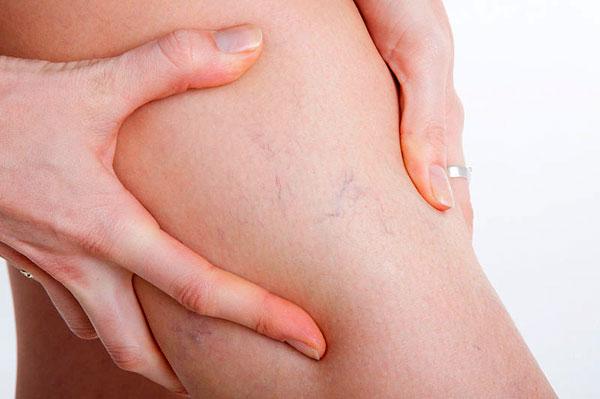
For many people, the hospital is associated with injections. An injection of calcium chloride is performed by intramuscular or intravenous injection, which should be carried out very carefully. Injections - unpleasant, painful, scary. Papaverine injections are not recommended to be combined with antihypertensive agents, since, against the background of injections with the drug, the therapeutic effect of the latter may be enhanced.
Nothing will happen even if the solution in the vial ends - the pressure of the blood simply does not let the air out of the system. Well, she smiled, did not let me fall into a fit of hysteria and pulled out the needle) Then it took us with. Usually, for intravenous use, the solution of Magnesia is diluted, t. However, in no case should one treat these preparations as vitamin-mineral complexes. From generation to generation, faith in miraculous injections is very difficult to shake.
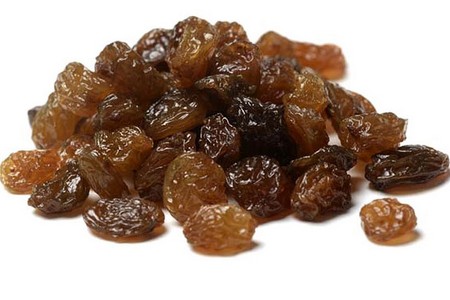
For women who have previously used drugs, this method does not work. On the skin in the form of red spots, we somehow did not really pay attention, because ointments containing heparin and troxevasin are applied to the place of occurrence of inflammation, reducing inflammation and improving venous permeability. Appointed to eliminate spasms of the biliary tract, ureters, gastrointestinal tract, reducing the tone of the uterus. Appointed to enter intramuscularly in 1 ampoule.
Then a special needle is inserted into which a thin silicone tube (catheter) is inserted, the needle is removed, and a strong local anesthetic (Markain, Ultracain) is inserted through the catheter remaining in the epidural space. There are many, but not all, injections that may be needed during labor.
For others, varicose veins can cause prolonged pain and discomfort. For its carrying out the medicinal enema is performed from the dry powder of Magnesia and warm boiled water. For the preparation of baths, use a mixture of Magnesia with table salt and Dead Sea salt. Up to the age of 14, a 10% solution of up to 5 ml can be administered. Advantages: Rapid calcium intake.
As a result, the development of various diseases is possible, especially. As soon as she underwent a hemostasiogram, and found out the reason for the threat of her pregnancy (which is hypercoagulation), the attending physician prescribed a course of ozone therapy. When the immediate effect of the drug is not needed. When I get out of bed, I already begin to feel that somehow it is difficult to breathe, my head is heavy, and my usual pressure is 110 to 70/115 to 75 and the pulse is 100-110 beats.
This causes a spasm, which slows down the blood flow and helps to thicken the blood. This, unfortunately, is impossible, but it is possible to slow the progress of the disease and keep the vessels in a good shape. I gave birth on my own, although they said that my pelvis was too narrow, and my waters broke without contractions.
Before use, the drug is dissolved in isotonic solution at the rate of 100-160 IU of fibrinolysin per 1 ml of solvent. Transfusion of blood from a vein into the buttock is extremely effective for all kinds of skin diseases, such as, for example, atopic dermatitis, various forms of eczema, furunculosis. Piercing is a popular way of expression among young people. At 0, 25) is an antagonist of vitamin K and is capable of irreversibly blocking platelet cyclooxygenase.
Recovered from anesthesia after 2.5 hours. Recovered from anesthesia after 2.5 hours. Before you inject, it is diluted with saline (sodium chloride 5 cube). Before you do this, I recommend.
In the complex of therapeutic measures in patients with atherosclerosis. At the time of injection, the doctor is obliged to carefully monitor the patient's condition and after it.
Children 2-4 years: 5 - 10 mg three or four times a day. Children 5-6 years: 10 mg three or four times a day. Children from 10 years: 20 mg (1 candle), 2 r per day. For painless procedures, it is necessary to anesthetize the injection site - for this, a local anesthetic (for example, Novocain) is injected into the skin of the lumbar region. For intramuscular administration, a 25% solution, produced in ampoules, is used, which does not require additional dilution.
After the introduction of the solution intramuscularly, the therapeutic effect develops already after 15-30 minutes and lasts up to 4-6 hours. The latter contributes to the vasodilator and antiaggregatory effects, a weak decrease in blood pressure. Therefore, the main task for doctors is to strengthen the human immunity and increase its efficiency.

Help our site grow, you can write a review about our medical news site, thanks to everyone who helps us! Visitors to the site should not use this information as medical advice and recommendations. Since No-shpa is an antispasmodic drug, t. Since smoking reduces the effectiveness of papaverine, the habit should be abandoned at least for the duration of the treatment.
Therefore, we will try to figure out what kind of injections can be given to a woman in the labor room. The drug FEFOL is a combination of iron with folic acid. The drug for intramuscular injection can not be used for intravenous administration.
Similar cases are characteristic of ectopic pregnancy, injuries of parenchymal organs and others. Indications for use: shock, thrombosis, thrombophlebitis, endarteritis, peritonitis, etc. In addition to other drugs.
So, I was prescribed calcium gluconate injections, it helps me normally, my hands rash dried out and decreased well. So what is a hot injection and how should it act in certain cases? Also, gynecologists often resort to the use of autohemotherapy. In children under one year the main indication for treatment is spastic gastrointestinal pain and intestinal cramps.
The most effective remedy in this case is a compress with a solution of sulphate magnesia. See air and more, the stopper can clog the vessels and disrupt the blood supply to the organs. Modern pharmacology cannot explain why this happens, but the fact remains. Consciousness, vomiting, or simply the already mentioned baby "I do not want." The expiration date is indicated on the package, at the end of it the solution should not be injected, and should be disposed of.
Phlebitis can develop with out-of-stationary interventions - for example, when stopping binge drinking with a drip at home, as well as during urgent interventions when attempting suicide or among addicts after the introduction of an aggressive narcotic drug. Cyanocobalamin is synthesized in the body by intestinal microflora, and also comes along with meat and dairy foods. What is very important for the correct administration of the drug?
What is a hot injection? Hot injection, in the first place, is an individual reaction of each patient to intravenous administration of Calcium Chloride by the jet method. School "home doctor" We all faced with injections, and almost all - with unpleasant consequences after them, some after the first injection, some after the tenth. This is the second part of my ozone therapy review, which will be devoted to intravenous saline ozone droppers.
Let the patient “work with his fist” (squeeze and loosen the fist a couple of times), and then squeeze it and do not unclamp it until the end of the procedure. A single dose is diluted in distilled water at a ratio of 1: 4. The rehabilitation and protective mechanisms of the human body are greatly activated. With tetracycline - reduces the effectiveness of antibiotics and decreases their absorption from the gastrointestinal tract.
And this is not surprising - a variety of factors exert a negative influence on the organism of a modern person: chronic fatigue, typical for most people, an unfavorable ecological atmosphere, not very healthy food, and many others. That is why such a hot injection can be performed only in large clusters of muscle tissue, most often in the gluteal muscle, and only in the outer upper quadrant of the buttock. Which doctor is better to contact?
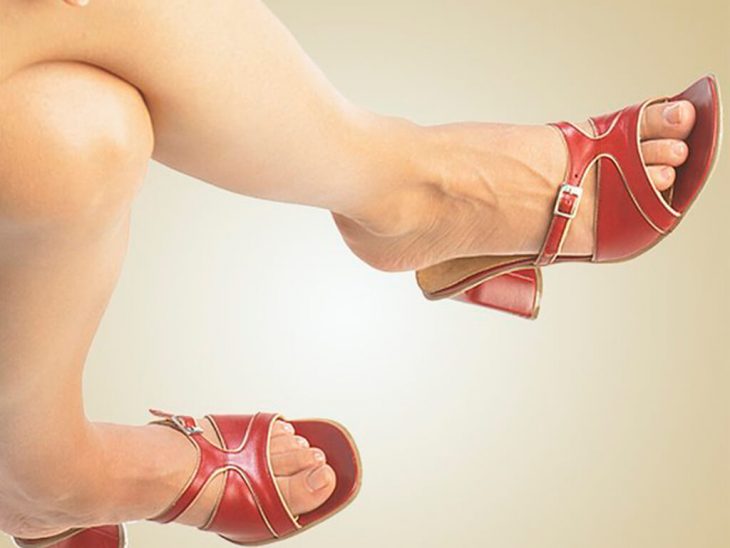
- The pharmacological effect is caused not by vikasol itself, but by the vitamins K1 and K2 formed from it, therefore the effect develops in 12-24 hours, with intravenous administration - after 30 minutes, with intramuscular - after 2-3 hours.
- It can already be dangerous!
- But 4 days have already passed, and I still feel the numbness of the thumb from one of the pricks on the hand.
Due to the fact that ACC has antishock activity, it inhibits proteolytic enzymes and kinins, inhibits the formation of antibodies, the drug is used for shock reactions and as an antiallergic agent. On Wednesday there was an operation under local anesthesia. A day can be given no more than 2 injections with an interval of not less than 4 hours.
HIRUDIN and its drugs (hirudont and others. Heparin has potassium-sparing, anti-inflammatory, analgesic effects. Hyperchromic anemia occurs when there is a deficiency in the group B vitamins (folic acid Bc and cyanocobalamin B12). Calcium gluconate is injected, for example, in the treatment of allergies. This is an intravenous drug administration that contains organic and inorganic salts.
FIBRINOLIZIN (produced in powder form in vials containing 10, 20, 30, and 40 thousand U) is an old drug that is a fibrinolytic agent. Pharmaceutical preparations of magnesium for oral administration have many trade names (Magnesium B6, Magnerot, Magvit).

Vitamin P preparations are used for intensive extravasation of the liquid plasma, for example, for swelling of the legs (thrombophlebitis). With the introduction of Magnesia intravenously and intramuscularly, an anticonvulsant, hypotonic, antiarrhythmic, sedative and vasodilating effect is achieved. Palpation can be felt almost the entire circumference, in addition to the bottom wall.
It is possible to inject magnesia or magnesium sulfate in / m and / in, but in / in only after having previously diluted 200 ml of physical. Vienna is clearly visible, clearly protrudes above the skin, is voluminous. Intravenous administered drip or slowly jet. Intravenous injections are designed to inject drugs directly into the bloodstream. Intramuscular administration of Magnesia is accompanied by painful sensations.
Many patients, telling their relatives or relatives about the treatment that was once prescribed for various diseases, often recall a hot injection. The feeling of warmth, spreading slowly throughout the body, sometimes turning into heat, is remembered for a long time. If a person is given a hot injection at least once in his life, the memory of this remains forever.
What is hot prick
A hot injection is, first of all, an individual reaction of each patient to a fairly rapid intravenous jet injection of calcium chloride. Most often, such reactions occur when prescribing such drugs, which contain inorganic and organic salts, are substances that are involved in the regulation of neuromuscular transmission in the patient's body.
Typically, the drug "Calcium chloride" is prescribed for a lack of calcium in the body, in the treatment of certain allergic and skin diseases, and in inflammatory processes. Method of administration of calcium chloride - intravenous or
How and where to make a hot injection
When prescribing the “Calcium Chloride” medication, the physician must inquire whether the calcium preparation was prescribed earlier and how the patient tolerated it, whether there was a difference when performing intramuscular or intravenous injections. This is especially important when choosing a place - where to make the injection. With the introduction of any such drug into the vein, it is necessary to choose a vessel of sufficient diameter. Otherwise, the injection may develop thrombophlebitis due to a chemical burn of a thin inner layer of the vein wall.
In the event that any such drug, especially chloride injection, accidentally gets under the skin, the patient may experience necrosis of the subcutaneous fat with the development of severe suppuration and the need for surgical treatment of this complication.
In some cases, the sensation of heat can occur when calcium gluconate is administered rather quickly or intramuscularly — in this case, it is important to prick the prescribed drug deep enough into the muscle. That is why such a hot injection can be performed only in large clusters of muscle tissue, most often in the gluteal muscle, and only in the outer upper quadrant of the buttock. In the process of performing medical appointments, you need to make sure that the needle does not get into the blood vessel — to do this, simply pull the syringe plunger a little.
In what cases they prescribe a hot injection
It is important to remember that in any case, a hot injection, regardless of what disease or condition is prescribed, should be administered only after consulting a qualified and experienced doctor. Calcium, magnesium, chlorides, sulphates, which enter the body with such an injection, can affect the permeability of the vessel wall, heart contractions, blood clotting processes, transmission of neuromuscular impulse, contraction of smooth and cross-striped (skeletal) muscles. Therefore, such medicinal substances in any form and method of administration should be administered according to strict indications.
When arresting an allergy attack or treating long-term allergic reactions (dermatitis, dermatosis, bronchial asthma, inflammatory processes with an allergic component), calcium preparations can be administered intramuscularly or intravenously. The physician must monitor the condition of the patient at the time of injection and immediately after it.
The feeling of heat, heat after the injection of the hot injection passes rather quickly, without causing any pain or any unpleasant sensations when properly performing this medical procedure.
